- How to Propagate Monstera Guide: The Three Ways to Succeed - September 17, 2021
- Escargot Begonia: Why Is The Rex Begonia So Rare? - August 31, 2021
- Rieger Begonia: When You Can Expect The Hiemalis Begonia To Flourish - August 31, 2021
This family of trees is closely related to the mulberry family, and as can be seen in nature, it also produces delicious fruits known as figs. The variety of trees in this family is enormous. There are large trees, vining plants, and bushes. There are also some varieties that grow as epiphytes or hemi-epiphytes, which tend to strangle surrounding trees.
These are ancient plants that have served as food, shelter, and source material for people groups around the world for millennia. Along with their practical usages, they are also featured in several ancient religious texts and some varieties are still considered sacred trees.
Ficus trees have brought humanity many blessings and benefits throughout history, and today, they are doing no less. They are beautiful plants to use as indoor and outdoor decorations, they are useful as a crop, and they provide religious and historical significance to many modern-day communities.
Common Ficus Types
There are over 800 varieties of plants that belong in the Ficus genus family. These plants range from vines to shrubs to massive trees. Each variety has its own unique features. Some grow fruits, some grow into enormous shade trees, and others can be used to decorate trellises or hide fences.
One quality of Ficus that may be overlooked, is that they are actually the most popular type of bonsai trees. These plants are capable of dealing with a lot of pruning, and consequently, they make the perfect tree to use as a bonsai tree.
With so many varieties and cultivars available to study and grow, it can get overwhelming. In order to keep things simple here, we are only covering fifteen of the most popular Ficus varieties. These will give you an idea of what a Ficus plant can look like and how it can be grown.
Australian Banyan ‘Ficus Macrophylla’

This variety of Ficus is native to eastern Australia, which is how it received its common name. It can grow extremely large (up to 200 feet tall) and features long leaves that are dark green in color and leathery in texture. Because this plant has a tendency to grow large and its root system can be invasive, it is recommended that it only be grown in large gardens.
Brown Turkey ‘Ficus Carica’
This is a cultivar of the Common Fig Tree ‘Ficus Carica’. It grows best in US Hardiness Zones 7 to 9 but can tolerate zones 5 to 6. Brown Turkey Ficus can reach up to 15 feet tall and 25 feet wide and produce two harvests of beautiful and delicious figs.
Chicago Hardy ‘Ficus Carica’
This is also a cultivar of the Common Fig Tree ‘Ficus Carica’. It is more tolerant of cold climates than other varieties and is known to grow well in US Hardiness Zones 6 to 9 with a high level of toleration for winters in zone 5. When planted in the ground, Chicago Hardy can grow up to 15 feet tall and 9 feet wide. It will not be as large when it is grown in a planter.
Common Fig ‘Ficus Carica’
This variety of Ficus is native to Western Asia, particularly the area known as Anatolia. It is capable of growing up to 20 feet tall and 20 feet wide and producing a harvest of edible fruits known as figs. There are several cultivars of the Ficus Carica available, the most popular being Brown Turkey and Chicago Hardy.
Creeping Fig ‘Ficus Pumila’
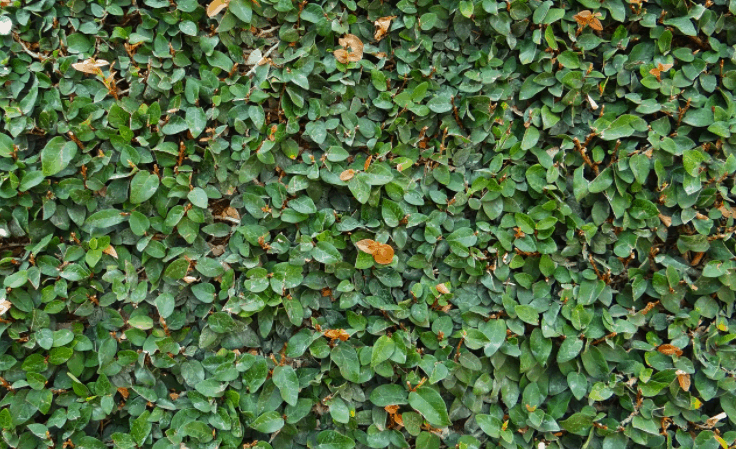
This variety of Ficus is primarily grown as a groundcover or as vining foliage to decorate fences and other structures. It grows quickly and covers up to 30 feet in height while spreading to over 3 feet in width. This is not a cold-hardy variety so it must be grown in areas that have a Mediterranean climate.
Ficus Audrey ‘Ficus Benghalensis’
This variety of Ficus doesn’t have any large or fussy care requirements; in fact, this is one of the easiest to care for members of this plant family. As is typical with most Ficus plants, Ficus Audrey can grow very large in the wild (up to 100 feet tall) but will remain reasonably sized when kept indoors (10 feet tall).
The features of a Ficus Audrey are fuzzy leaves that grow in an oblong shape with thick light-green veins running throughout them. It will also drip with a latex-like sap when pruned.
Ficus Daniella ‘Ficus Moclame’
This variety of Ficus comes from Australia and southeastern Asia. It is the type of plant that needs plenty of pruning and looks exquisite when properly cut and shaped. Ficus Daniella requires at least six hours of direct sunlight and plenty of heat, so it should not be planted in an area that is cold during winter.
Fiddle-Leaf Fig ‘Ficus Lyrata’
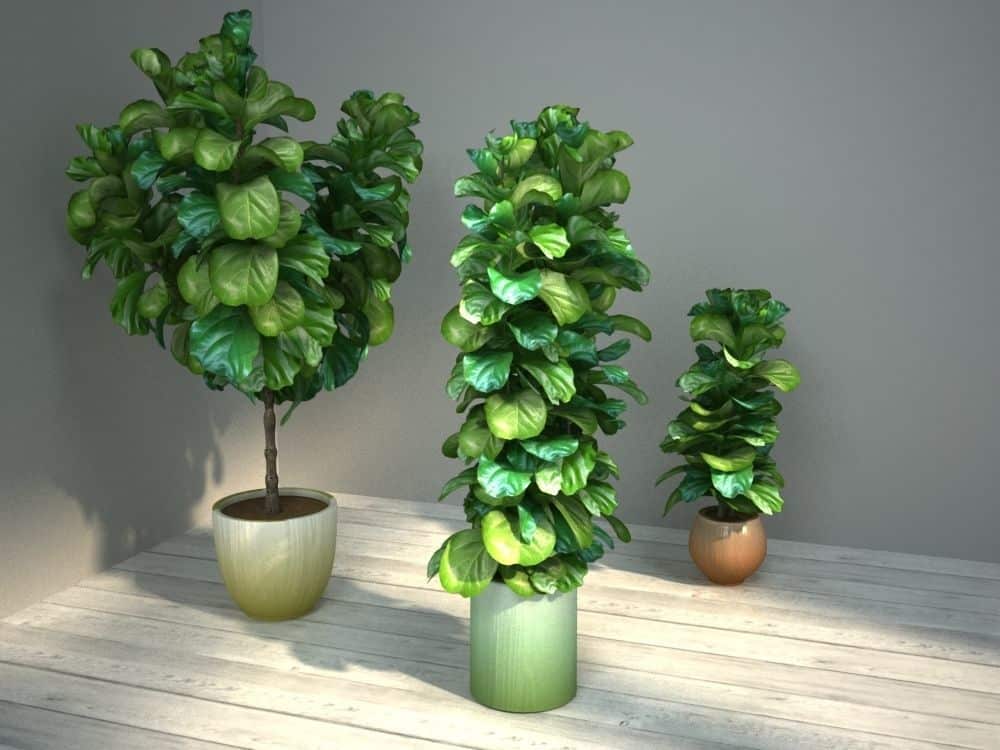
This variety of Ficus has become a very popular houseplant in recent years. It is stunningly beautiful so there is no real wonder why this has happened. Unfortunately, it is also known for being a fussy plant. Fiddle-Leaf Fig plants need plenty of direct sunlight and cannot go for long in dry soil; although, they also cannot go for long with soggy soil. It is a balancing act to prescribe just the right amount of sun, heat, and water to keep these plants happy and healthy.
Indian Laurel ‘Ficus Microcarpa’
This variety of Ficus is perfect to grow as a source of shade in warm climates. It can reach up to 60 feet tall and 60 feet wide when planted in Sunset Climate Zones 9, 13, and 16 to 24. Since this is a plant that is native to the tropical island of Borneo, it should not come as a surprise that it is not cold-hardy.
Mistletoe Fig ‘Ficus Deltoidea’
This variety of Ficus grows in a shrub formation with leaves and berries that resemble mistletoe. While this particular plant is not cold-hardy and is only able to be planted in the ground in US Hardiness zones 10a to 11, it is, however, very amicable to growing indoors in a container. Mistletoe Fig will stay compact and small in a container and it does well in low light areas.
Narrow-Leafed Fig ‘Ficus Maclellandii “Alii”’
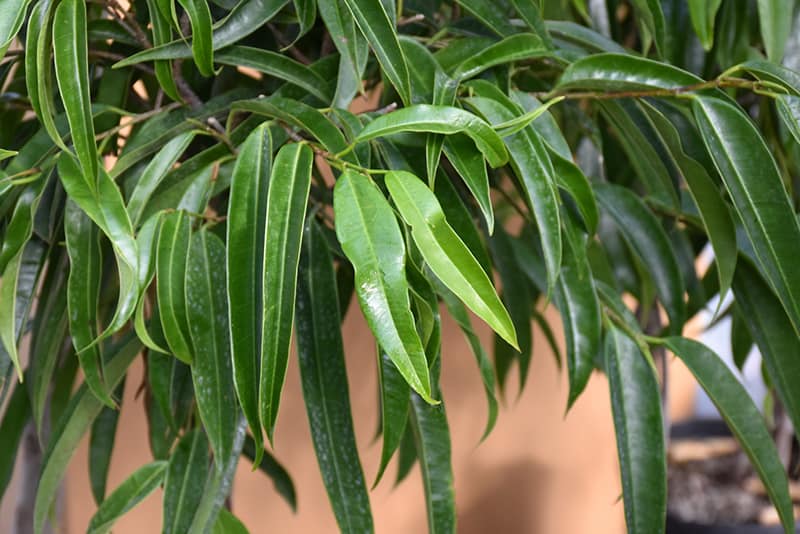
This variety of Ficus is also known as the Banana Leaf Fig because its leaves somewhat resemble hanging bananas. The care requirements of Narrow-Leafed Fig are similar to other types of Ficus, but it is somewhat less fussy than other varieties.
Red-Leafed Fig ‘Ficus Congesta’
This variety of Ficus can grow up to 50 feet tall when planted in the ground. It is not a cold-hardy plant and should be planted only in US Hardiness zones 10 and 11; otherwise, it should be set in a plant container that can be transported indoors during the winter months.
Rubber Tree ‘Ficus Tineke’
This variety of Ficus is native to India and Indonesia. The Rubber Tree is often used to create living bridges in its homeland because its aerial roots are so elastic.
The features of this particular variety of Ficus are large, glossy, and rubber-like leaves that are colored in variegations of pink, green, and yellow. It also features a latex-like sap that can be irritable when touched by the skin.
Sacred Fig ‘Ficus Religiosa’
This variety of Ficus is best known for its sacredness to Buddhists and Hindus. It is a variety that can grow outdoors in US Hardiness zones 10a to 11 or indoors in a plant container. With a little pruning, its delicately pointed leaves can be transformed into landscaping perfection.
Weeping Fig ‘Ficus Benjamina’
This variety of Ficus is an excellent choice to detox indoor air. It is also a great choice to grow in plant containers since it will stay relatively small and compact. With a little pruning, it will be very delicate and decorative.
How to Grow Ficus Plants from Seed
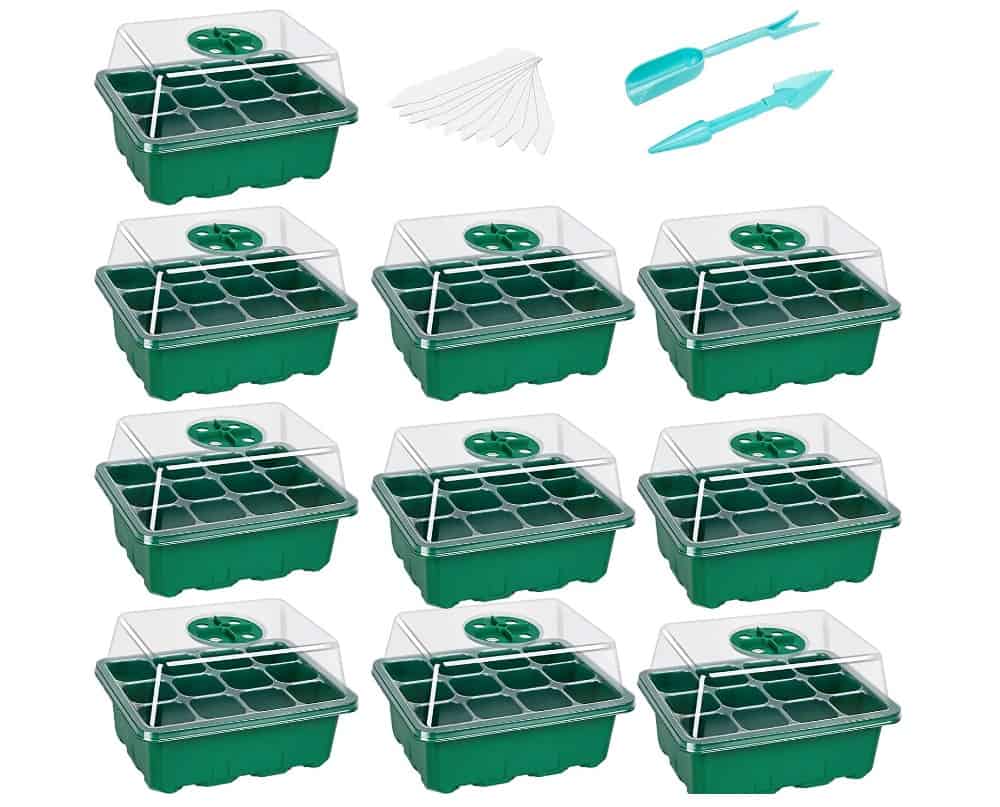
Growing any plant from seed is time-consuming, but this is especially true of Ficus trees. But, this is a chance for you to test your green thumb and grow everything you want from the ground up. Here’s how this method works:
- Harvest seeds from a Ficus plant or purchase seeds from a reputable seller (sellers who price their seeds between $1 and $2)
- Put the seeds in a glass of water to determine which seeds are fertile and which are not (fertile seeds will sink; sterile seeds will float)
- Fill a seed starter tray with a seed starting soil mix
- Place the seeds on top of the soil mix; there is no need to cover them
- Water the soil so that it is moist but not soggy
- Set the container in a place this is at least 77 degrees Fahrenheit
- Ensure that the seeds get plenty of bright but indirect sunlight, or, they are set under grow lights
- Maintain the heat and moisture levels as the seeds germinate and grow
- When the second set of leaves appear on the plants, they can be transplanted to permanent plant containers
How to Propagate Ficus Plants

Ficus plants are easy to propagate via stem cuttings so this is actually the most commonly used method to grow a new plant. Here’s how this method works:
- Put on a pair of gloves (the sap of this plant can irritate the skin)
- Use a sterile cutting utensil to cut off a stem that is not woody (the stem should be at least a foot long and include a node and leaves)
- Remove leaves that are near the bottom of the stem
- Use a rooting hormone on the bottom of the stem
- Set the cutting into a container that has been filled with potting soil
- Water the soil
- Set a plastic bag over the plant to keep in humidity
- Set the plant container in a warm area that has access to bright, but indirect sunlight
- If necessary, repot the plant in a larger container once it is well established
Ficus Growing Conditions
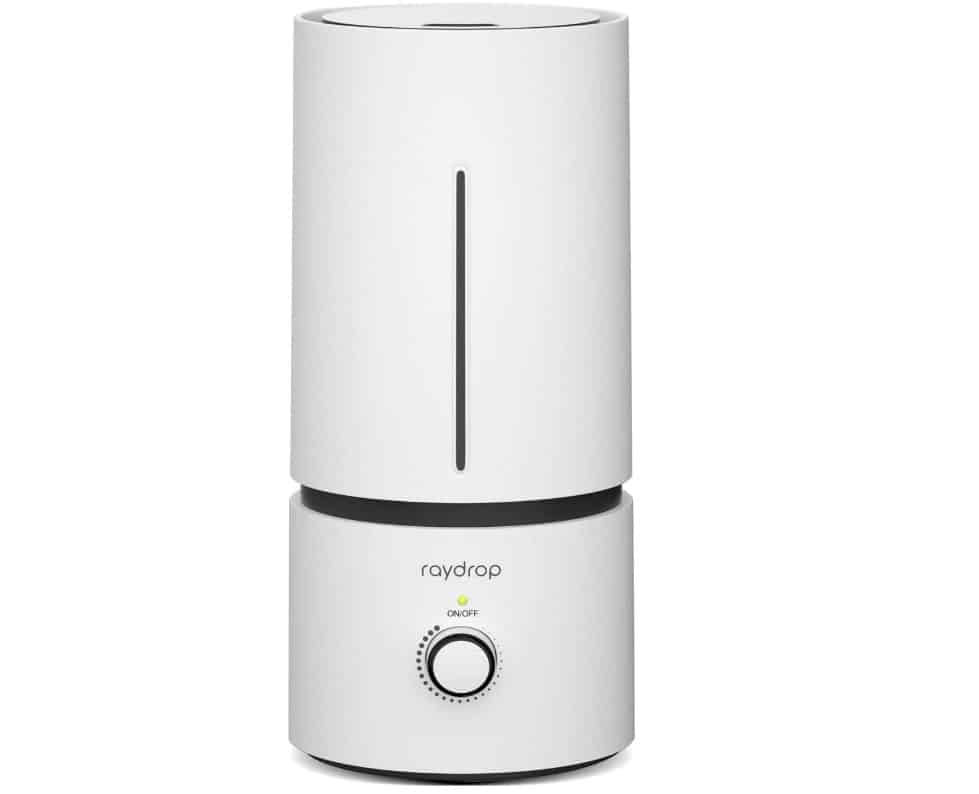
Most varieties of Ficus require warm temperatures and plenty of sunshine. There are a few varieties that are cold-hardy up to US Hardiness zone 5, but for the most part, Ficus should only be planted outside in zone 9 and above. Check a plant hardiness zone map and a planting guide for the particular variety of Ficus that you own before permanently setting it in the ground.
When kept indoors, remember to keep your Ficus plants away from drafty windows and doors as well as heater and air conditioner vents. They will need humid heat and this can be provided through plant humidifiers, pebble trays, and heat mats.
How to Plant Ficus
Ficus can be grown as an indoor in any hardiness zone or as an outdoor plant in a few hardiness zones. Since these are popular to grow in both places, we are going to list the methods for planting them indoors and outdoors.
Indoor Method:
- Choose a plant container that is 2 inches larger in diameter than its current container
- Fill the plant container potting soil
- Create a hole in the soil for the plant to set inside
- Carefully remove the plant from its current container
- Gently dust off any excess soil from its roots
- Using a sterile cutting utensil, cut off any rotten roots
- Set the plant into the hole in the new container
- Spread the soil around so that the plant is secure in its new container
- Water the plant
- Set it in a warm spot with plenty of sunlight
Outdoor Method:
The first step to planting a Ficus outdoors is to select the appropriate spot to plant it. Keep the following three placement requirements in mind as you select a place for your new Ficus.
- Choose a location in your yard that will allow the Ficus to access direct sunlight most of the day all year round
- Choose a location in your yard that will allow the Ficus to grow tall and spread out (these plants grow very tall and wide)
- Choose a location in your yard that offers the root system of the Ficus adequate water drainage, or, adjust the drainage in an area of your yard so that the Ficus will not be resting in standing water
Once you have selected the best spot to plant your Ficus, choose a time in late spring to move the plant to its new home. Then, follow these steps:
- Dig a hole for the plant
- Set the plant in the hole so that the top of its root ball is level with the ground
- Pack soil around the root ball
- Provide the plant a deep watering
- Maintain the soil’s moisture around the plant by watering it twice every week
Ficus Potting & Soil
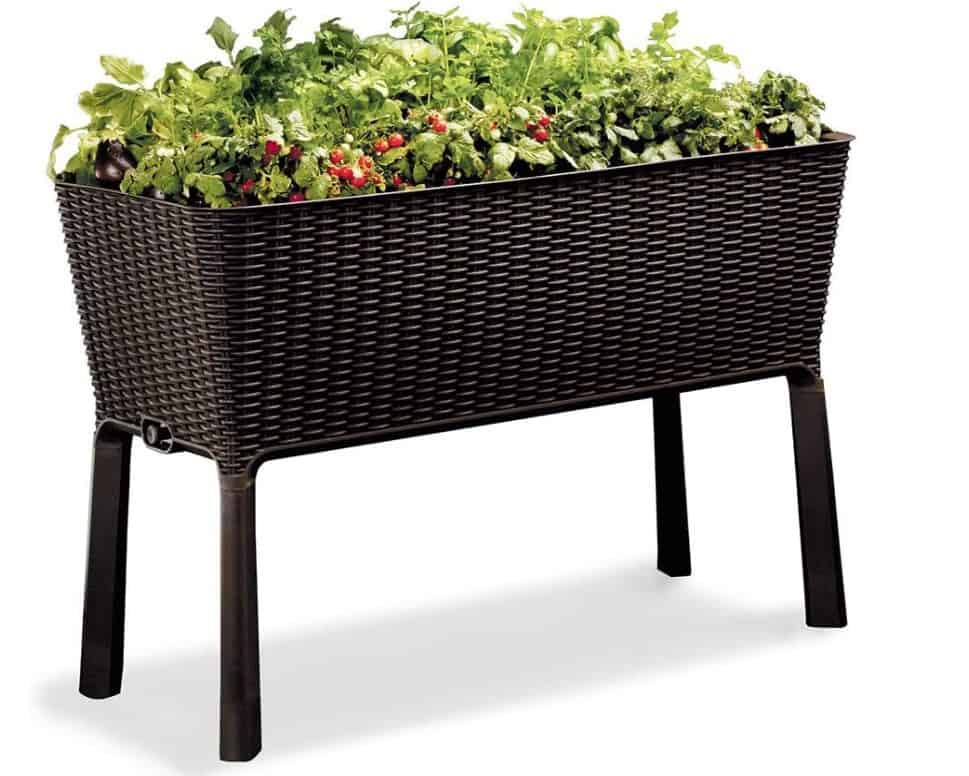
All Ficus plants should be set in a plant container with plenty of drainage holes. A self-watering plant container is an excellent choice since these plants can get too large to move around and they suffer from overwatering.
Ficus plants should be set in soil that is high-quality and nutrient-rich. This Ficus Soil Mix is custom designed for growing Ficus plants in containers. Also, the soil’s pH levels should be kept neutral. To determine the pH level of soil, use a Soil pH Meter to test it. Soil levels can be made more acidic by adding bone meal, hardwood ashes, or ground eggshells to it. Soil levels can be made more alkaline by adding ground limestone to it. For a more detailed look at how to adjust soil pH levels, read this article.
Ficus Water Requirements
Ficus plants that are kept in the ground outdoors should be watered twice a week. Ficus plants that are kept in containers should only be watered when the top two inches of their soil are dry. The soil should be checked regularly since it does not tolerate dry soil for long; these plants prefer moist but not soggy soil. Use a soil probe to test the moisture levels of the soil and eliminate dirty hands and guesswork.
Along with a soil probe, a plant watering app can help prevent overwatering or under watering these fussy plants. Use one to help you track when a plant has been watered, set reminders to water it, and get answers to common plant care questions.
Ficus Light Requirements
Many Ficus varieties are canopy plants; that is, they are the topmost layer of the forest where it grows naturally. Because they grow at the top level of the forest, they are well suited for bright and direct sunlight. They should, however, be acclimated to bright, direct sunlight so that they don’t dry out or struggle from shock. Also, when they are in a planter, they should be rotated several once a month so that every side of it receives direct sunlight.
Best Ficus Fertilizer

Ficus can be fertilized once a month during the spring, summer, and autumn seasons. They do not need to be fed during winter since this is a time for the plant to rest. Give Ficus trees planted in the ground a light dose of a 10-10-10 fertilizer. Give Ficus trees planted in containers a dose of a slow-releasing organic fertilizer such as these fertilizer nuggets.
Best Ficus Companion Plantings
Tropical plants can benefit from the extra humidity provided by clustering plants together. This will create a beautifully designed environment that is not only aesthetically appealing, but it will also be healthy for plants and humans. When contemplating what other types of plants you should set next to your Ficus, consider these options.
Pothos Varieties
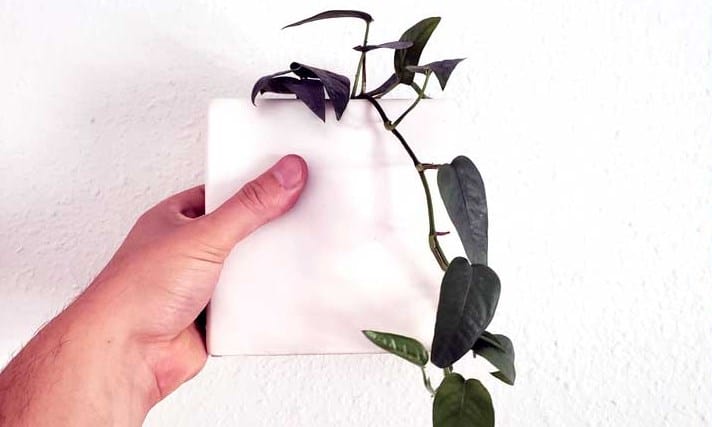
These plants are also native to tropical regions of the world, and therefore, will share humidity with Ficus plants. Pothos plants are also very unfussy plants, which will make it a breeze to care for both types of plants side by side.
Calathea Varieties
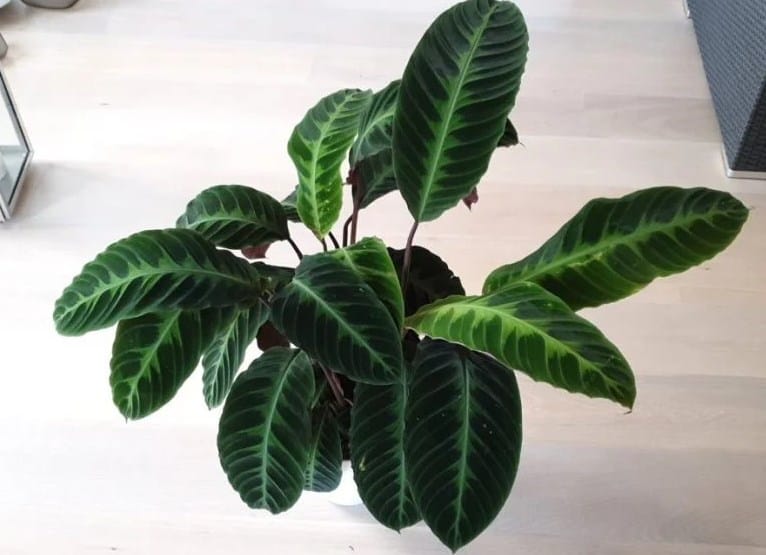
Here is another tropical plant option that can share humidity with your Ficus plant, plus they have care requirements that are similar. Calathea plants may be notoriously fussy, but they are also beautiful and well worth the effort. Why not give them a go along with your Ficus?
Any Other Type of Ficus Plant
Choose another Ficus variety to set next to your current plant variety. They will both require similar care and this should streamline all your gardening routines.
Ficus Diseases and Common Problems
There are a few diseases and pests that Ficus plants are susceptible to, but if you learn how to properly care for your plant, these should not be a huge problem. Here are the most common issues faced by Ficus plants:
Aphids
This type of infestation looks likes tiny insects that are shaped like teardrops. To deal with an infestation of aphids, follow these steps:
- Spray the plant with a mixture of neem oil and soapy water
- Wipe down the leaves of the plant
- Apply neem oil to the leaves to prevent another infestation
Browned or Browning Leaves
This is often a sign that the plant is not receiving adequate amounts of moisture. Tweak its water regimen and provide it with more humidity and the plant should recover.
Other problems that show up as browning on leaves are too much fertilizer or too much direct sunlight. If you suspect either of these may have caused your plant’s leaves to turn brown, try moving it to a shadier area to avoid direct sunlight or saturate the soil of the plant to remove excess fertilizer.
Dropped or Drooping Leaves
This is often a sign that the plant has been under-watered, but it can also be caused by the stress of being transplanted or moved into a new environment. Keep an eye on the plant and give it the care it needs and it should recover.
Mealybugs
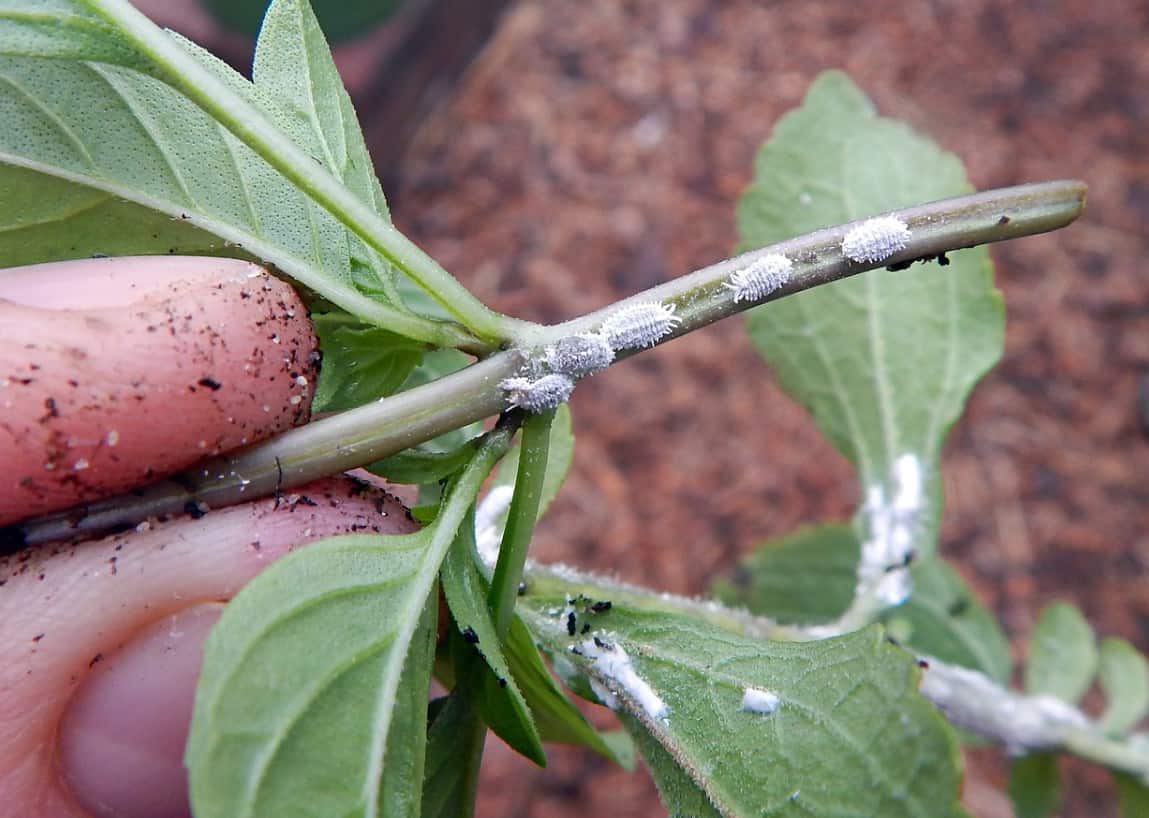
This type of infestation looks like cotton that has attached itself to a plant’s stems and leaves. To deal with an infestation of mealybugs, follow these steps:
- Spray a solution of alcohol and water on the leaves
- Rub the leaves with a cotton ball
- Coat the leaves in neem oil or insecticidal soap every few days
Scale Insects
Evidence of this problem is round lumps on the plant’s leaves and stems. These lumps are usually small, round, and brown in color. To deal with an infestation of scale bugs, follow these steps:
- Spray them off with a hose
- Wipe the remainder off with neem oil and a cloth
- Prevent them from returning by coating the leaves with neem oil regularly
Spider Mites
Evidence of a spider mite infestation will show up as webbing on the leaves and stems. To treat this type of infestation, follow these steps:
- Fill a spray bottle with a quart of warm water, 1 tsp. of dish soap, and 2 tsp. Of neem oil
- Spray and wipe the leaves and stems of the plant clean
- Repeat as necessary
Thrips
Evidence of this type of infestation looks like tiny lobster-shaped bugs on the plant when they are magnified. To treat this type of infestation, follow these steps:
- Spray the plant with a hose
- Remove any visible insects left on the plant
- Wipe down the leaves of the plant with neem oil
- Treat the plant once a week until the infestation has been removed
Yellowed or Yellowing Leaves
This is a sign that the plant has been overwatered. If its water regimen is adjusted it should recover.
Ficus Treatment and Maintenance
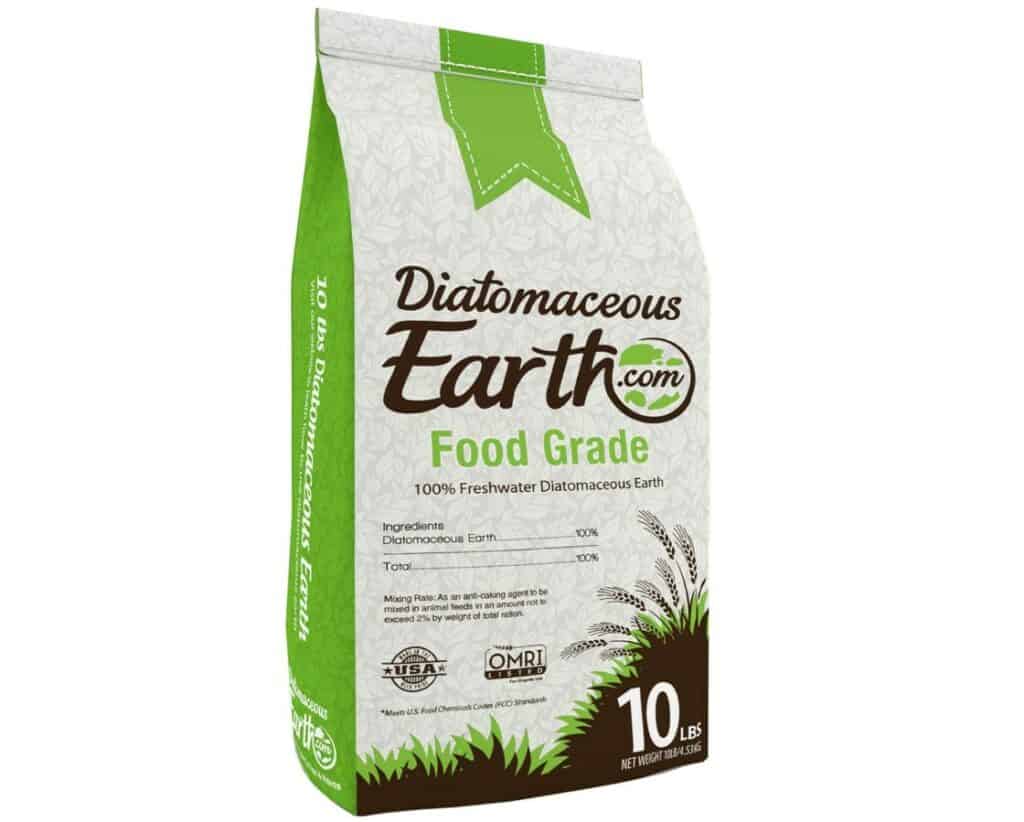
The best way to prevent harmful diseases and pest infestations is to provide the plant with regular care and cleaning. Here are a few tips to help keep your Ficus plant as healthy as it can be.
- Check it for signs of disease and infestations regularly, and treat them quickly.
- Clean the plant’s leaves regularly with neem oil.
- Learn how to properly water and feed your Ficus plant.
- Make sure your plant is set in an area with adequate amounts of sunlight, heat, and humidity.
- Mix diatomaceous earth into the soil of potted plants.
Where to Buy Ficus Seeds Online
Ficus seeds are quite difficult to find, but these online shops are great places to begin searching for them:
Where to Buy Mature Ficus Online
Varieties of Ficus plants are readily available at these online shops:
FAQs
Question: Are Ficus Plants Toxic?
Answer: Yes, these plants are toxic to pets and humans. Not only are their leaves and bark toxic if consumed, but their sap is also toxic if touched. If someone, has consumed any part of one of these plants, contact a medical professional or poison control.
Poison Control Center
Animal Poison Control
Ask a Poison Control Vet
Question: Do You Need a Male and a Female Fig Tree In Order to Produce Fruit?
Answer: No, not necessarily. Fig trees that are capable of producing edible fruit will have both male and female flowers on them; however, there is a type of fig tree that produces inedible fruit, is considered a male tree, and is typically used to pollinate trees that produce edible fruit. This particular tree is a Caprifig tree.
Question: Are Figs Considered Vegan?
Answer: Figs and fig wasps have a symbiotic relationship where the figs rely upon the wasps to pollinate them and the wasps are reliant upon the figs for a place to lay their eggs. But, because this relationship requires the wasp to die inside the fig so that the fig can be pollinated, it is sometimes brought up that figs are not vegan. This is a matter of personal conviction, but most vegans do not consider this process of pollination as animal cruelty, and therefore, view figs as vegan.
Concluding Thoughts
Ficus plants are an amazing piece of nature. It is also amazing that these giant trees can be brought home and tamed for indoor decorations. They may require a bit of learning to understand how and where they grow best, but what they offer in beauty, shade, fruit, and wonder are completely worth the effort.
